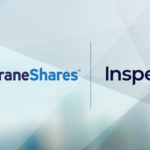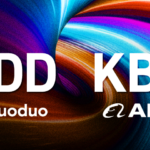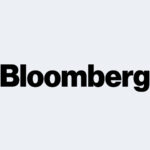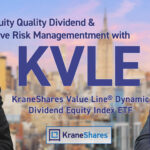Value Line® Funds CEO, Mitchell Appel On Value Line’s Ranking System and History

Periods of market uncertainty, such as the recent geopolitical tensions with Russia and Ukraine or the Covid crash of 2020, can leave investors feeling like their portfolios are exposed. We developed the KFA Value Line® Dynamic Core Equity Index ETF (Ticker: KVLE) to help investors potentially mitigate down markets while still capturing the long term appreciation provided by equities. KVLE relies on the venerable Value Line® stock ranking system as a key input to its investment process. The application of these ranks has been a significant contributor to the performance of KVLE.
While KVLE has not been immune to this year's volatility, it has held up better than the S&P 500, returning -1.81% versus the S&P -4.60%1.


We recently sat down with Mitchell Appel, CEO of Value Line® Funds, and EULAV Asset Management to get his views on the history of Value Line®. See our interview below.
Value Line® has a storied history. Can you share a bit of that and how the firm got started?
Sure. Arnold Bernhard founded Value Line® in 1931 after spending several years on Wall Street as an employee of Moody’s Investors Service. After the crash of 1929, he determined that the then current practice of analyzing stocks was inadequate. He set out to develop a set of objective measures that would signal when a stock was overvalued and when it was undervalued – measures that would not yield to emotions. What followed revolutionized the practice of securities analysis and sent Value Line® on its path to being one of the nation’s largest independent investment research services. Value Line’s® leadership in research, is made possible by the firm’s dedicated team of over 70 analysts, researchers, and statisticians.
What year did Value Line® begin publishing the Timeliness™ and Safety™ Ranks?
The Timeliness™ Ranks began in their current format in 1965, and the Safety™ series a few years later.
KVLE incorporates both the Value Line® Timeliness™ and Safety™ Ranks as inputs to its process. Can you describe some of the key elements of these ranks and how they differ/complement each other?
The Timeliness™ Rank is Value Line’s® measure of the expected price performance of a stock for the coming six to 12 months relative to the universe of approximately 1,700 stocks. Stocks ranked 1 (Highest) and 2 (Above Average) are expected to perform the best relative to the approximately 1,700 stocks. Stocks ranked 3 are expected to be average performers. Stocks ranked 4 (Below Average) and 5 (Lowest) are expected to underperform stocks ranked 1 through 3 in Value Line’s® universe. At any one time, there are 100 stocks ranked 1; 300 ranked 2; approximately 900 ranked 3; 300 ranked 4, and 100 ranked 5.
One of the factors in determining the Timeliness™ Rank is earnings growth. Companies whose earnings growth over the past decade has been greater than their stocks’ price appreciation tend to have a higher rank. In addition, the ranks take into account a stock's recent price performance relative to all the other stocks in the Value Line® universe, capturing the particular stock’s momentum. A company's recent quarterly earnings performance and any recent earnings surprises measured against expectations are also factors. These are all combined to determine the Timeliness™ Rank.
A second investment criterion is the Value Line® Safety™ Rank. This rank measures the total risk of a stock relative to the other stocks in the Value Line® universe. It is derived from a stock’s Price Stability score and the Financial Strength Rating of a company. Safety™ Ranks are also given on a scale from 1 (Highest) to 5 (Lowest) as follows:
-Rank 1 (Highest): These stocks, as a group, are expected to be the safest, most stable, and least risky investments relative to the Value Line® universe.
-Rank 2 (Above Average): These stocks, as a group, are expected to be safer and less risky than most.
-Rank 3 (Average): These stocks, as a group, are expected to be of average risk and safety.
-Rank 4 (Below Average): These stocks, as a group, are expected to be riskier and less safe than most.
-Rank 5 (Lowest): These stocks, as a group, are expected to be the riskiest and least safe.
Stocks with high Safety™ Ranks are often associated with larger, financially sound companies; these same companies also often have somewhat less-than-average growth prospects because their primary markets tend to be growing slowly or not at all. Stocks with low Safety™ Ranks are often associated with companies that are smaller and/or have weaker-than-average finances; on the other hand, these smaller companies sometimes have above-average growth prospects because they start with a lower revenue and earnings base.
Please note these are key general aspects of the Timeliness™ and Safety™ Ranking systems and not meant to be a comprehensive description of all the proprietary factors that determine the rankings.
Additional Information on KVLE
On top of Value Line’s® inputs, KVLE's non-discretionary sub-advisor 3D/L provides additional risk management. 3D/L is an SEC Registered Investment Advisor headquartered in Hartford, Connecticut. 3D/L applies its Lee Adaptive Philosophy to KVLE, which is a quantitative screen designed to capture the expected long-term capital appreciation provided by equities while seeking to mitigate the impact of down markets.
The Value Line®Safety™ Ranking is based on historical data and applies to the underlying securities of the fund, and not the fund itself. Past performance is no guarantee of future results. Safety™ does not imply stocks cannot lose value. All investing involves risk including the potential loss of principal.
Citation
- Data from Bloomberg as of 3/31/22.
Index Defintion
S&P 500: is an American stock market index based on the market capitalizations of 500 large companies having common stock listed on the NYSE or NASDAQ.
r-ks-sei

















